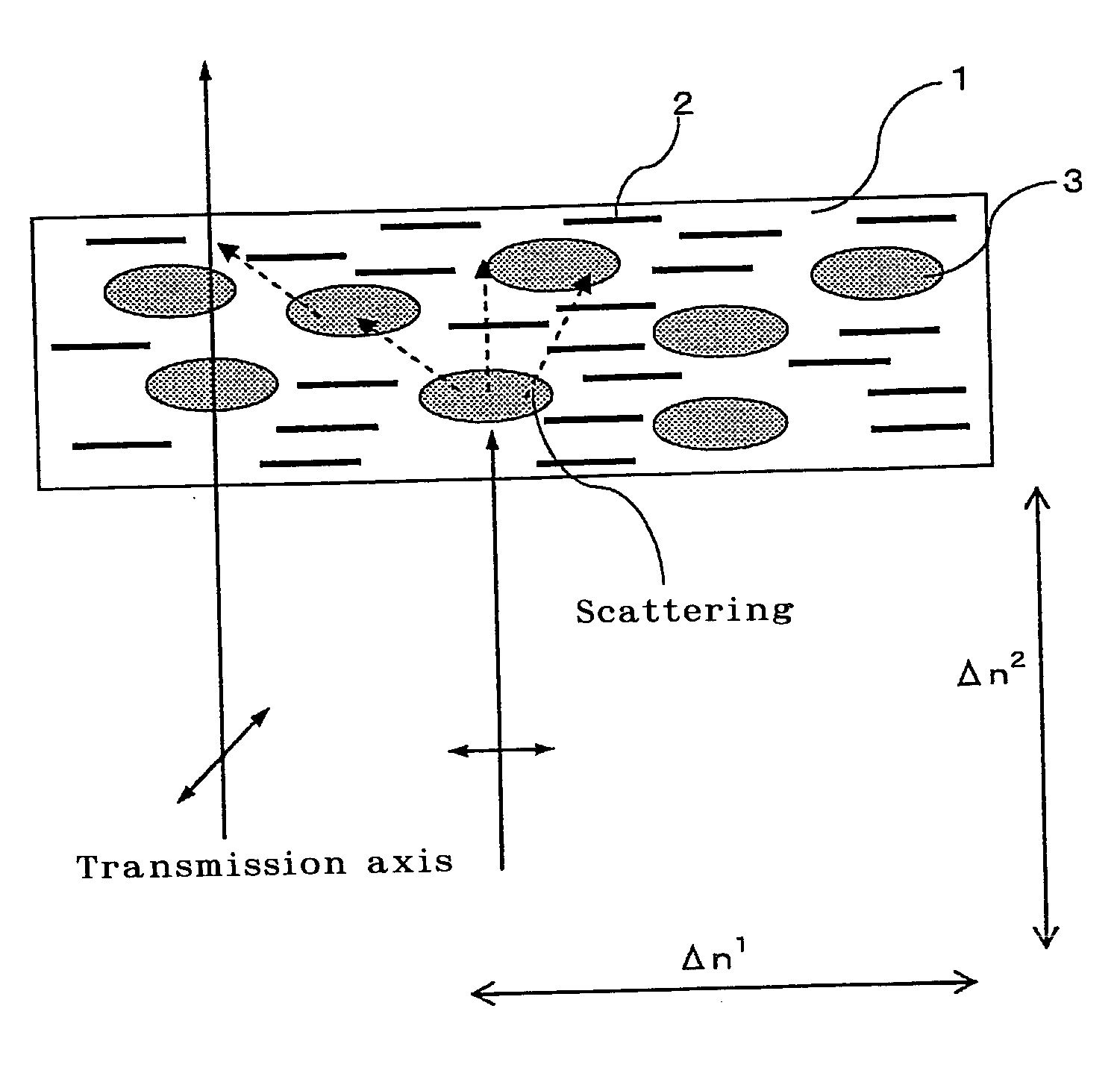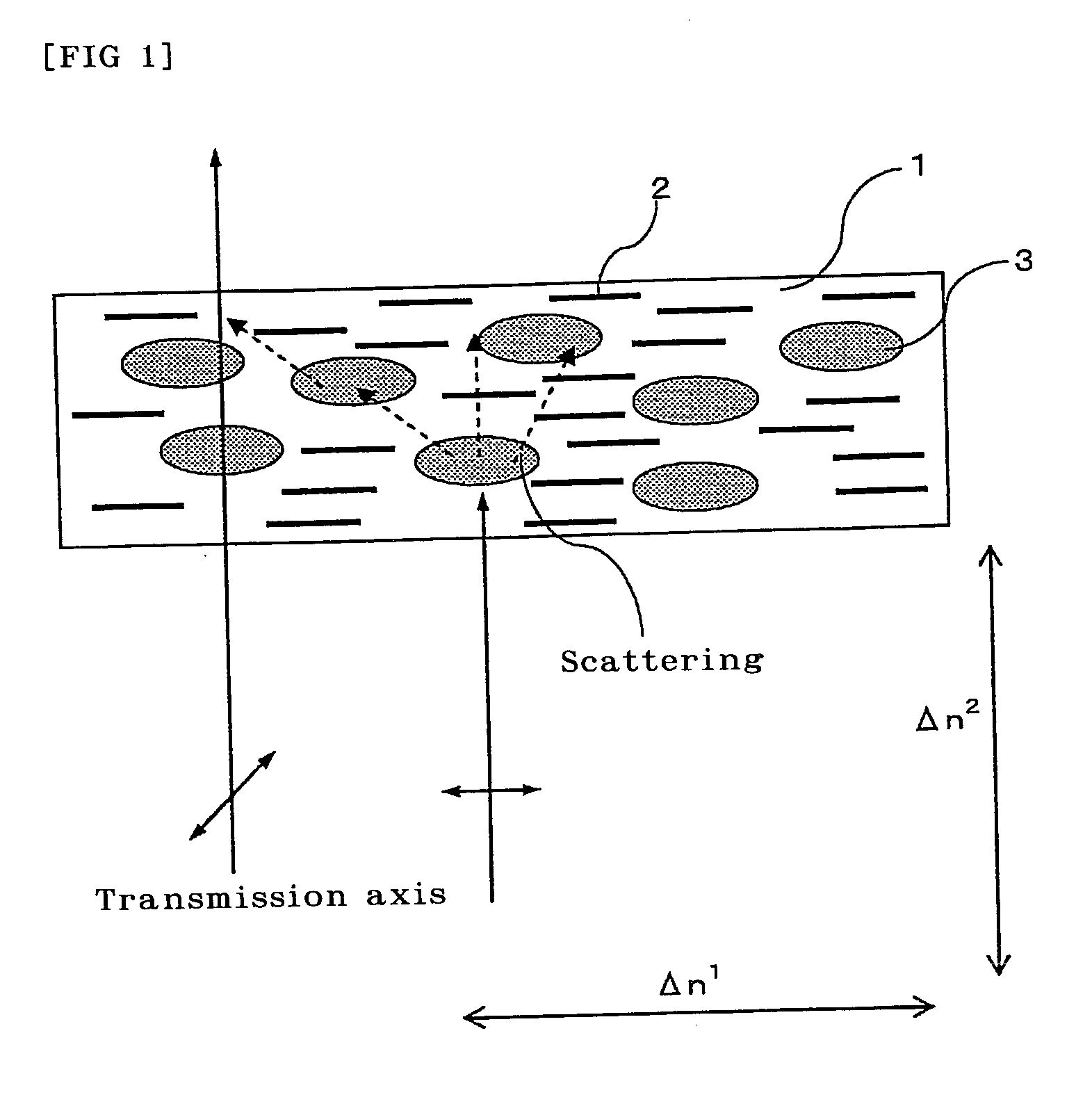Methods for Manufacturing Polarizers, Polarizing Plates and Laminated Optical Films, and Polarizers, Polarizing Plates, Laminated Optical Films, and Image Displays
a technology of laminated optical films and polarizers, which is applied in the direction of polarizing elements, instruments, other domestic articles, etc., can solve the problems of reducing the transmittance, reducing visibility, and easy unevenness of iodine absorption of polarizers, and achieves high polarization degree
- Summary
- Abstract
- Description
- Claims
- Application Information
AI Technical Summary
Benefits of technology
Problems solved by technology
Method used
Image
Examples
example 1
Preparation of Iodine Type Polarizer
[0153]An aqueous polyvinyl alcohol solution with a solids content of 13% by weight containing a dissolved polyvinyl alcohol resin with a polymerization degree of 2400 and a saponification degree of 98.5%; a liquid crystalline monomer with mesogenic groups each having one acryloyl group at each of both ends (with a nematic liquid crystal temperature range of 55 to 75° C.); glycerin; and a photopolymerization initiator (Irgacure 184 manufactured by Ciba Specialty Chemicals Inc.) were mixed such that the ratio of the polyvinyl alcohol, the liquid crystalline monomer, the glycerin, and the photopolymerization initiator was 100:3:15:0.015 (by weight). The mixture was heated to a temperature not lower than the liquid crystal temperature range and stirred in a homomixer to form a mixture solution. The mixture solution was allowed to stand at room temperature (23° C.) so that air bubbles were removed from the mixture solution. Thereafter, the mixture solu...
reference example 1
[0157]A polarizer was obtained using the process of Example 1 except that the ultraviolet irradiation process (vii) was not performed. It was demonstrated that the resulting polarizer showed anisotropic scattering and refractive index similarly to that of Example 1.
example 2
Preparation of Polarizing Plate
[0159]An adhesive composed of an aqueous solution of 7% by weight polyvinyl alcohol was applied to both sides of the polarizer obtained in Example 1, and then a triacetylcellulose film (80 μm in thickness), as transparent protective, whose surface to be adhered was saponified with an aqueous sodium hydroxide solution was adhered to each side of the polarizer to form a polarizing plate.
PUM
| Property | Measurement | Unit |
|---|---|---|
| refractive index difference | aaaaa | aaaaa |
| refractive index | aaaaa | aaaaa |
| transparent | aaaaa | aaaaa |
Abstract
Description
Claims
Application Information
 Login to View More
Login to View More - R&D
- Intellectual Property
- Life Sciences
- Materials
- Tech Scout
- Unparalleled Data Quality
- Higher Quality Content
- 60% Fewer Hallucinations
Browse by: Latest US Patents, China's latest patents, Technical Efficacy Thesaurus, Application Domain, Technology Topic, Popular Technical Reports.
© 2025 PatSnap. All rights reserved.Legal|Privacy policy|Modern Slavery Act Transparency Statement|Sitemap|About US| Contact US: help@patsnap.com



